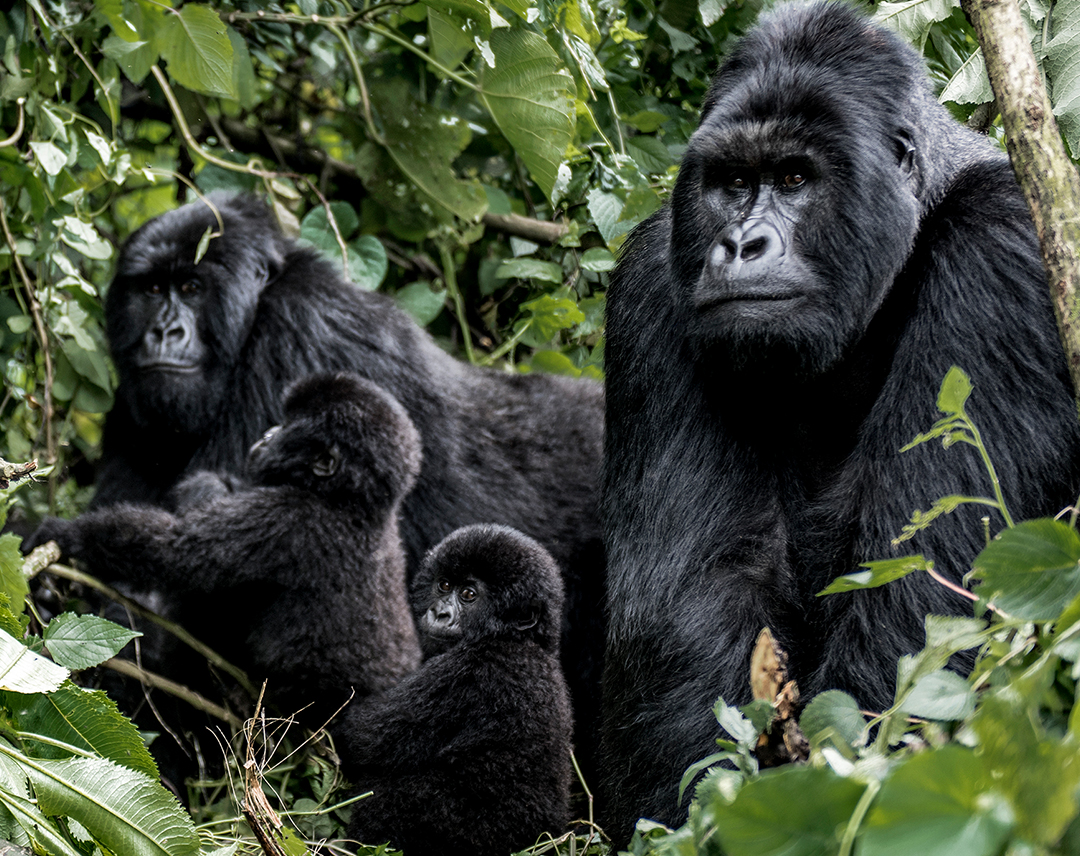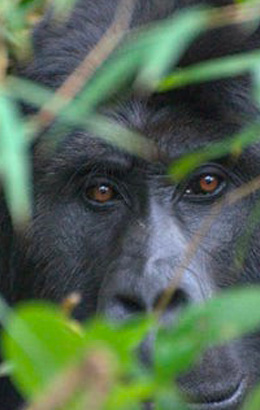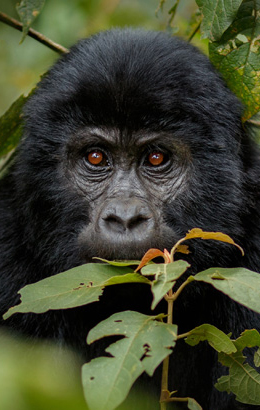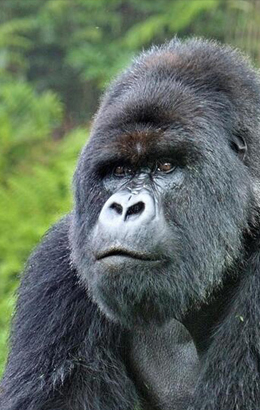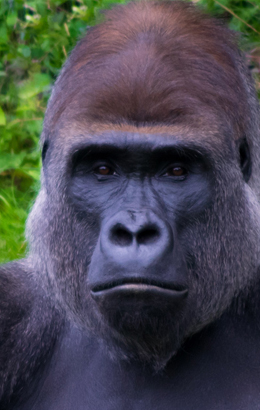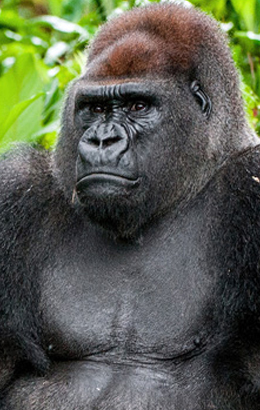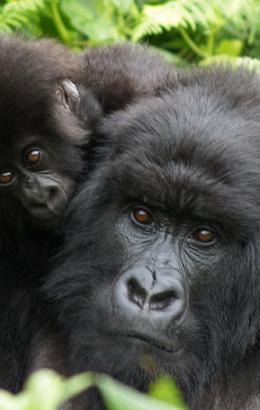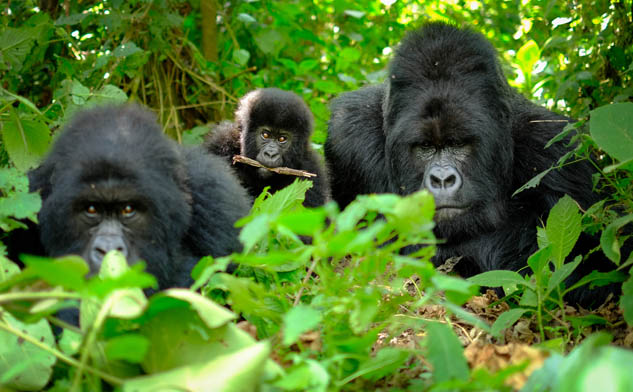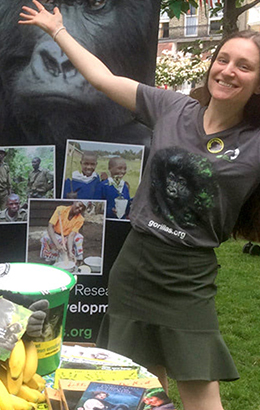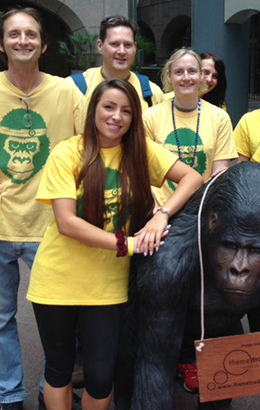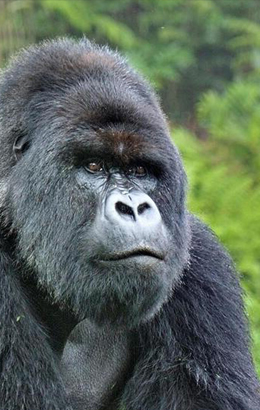The largest living primate
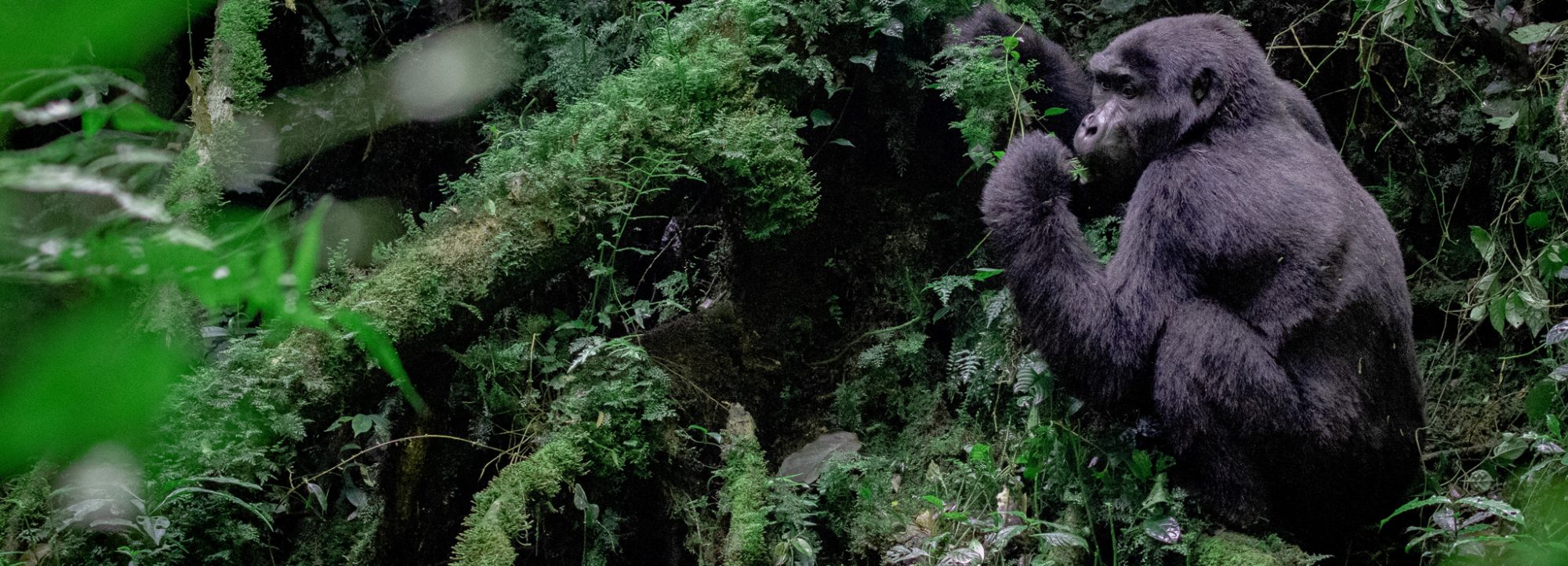
The gentle giants of the African forest, gorillas are the largest living primate and one of humans closest living relatives.
Although physically intimidating and powerful, gorillas are extremely intelligent, sensitive and emotional beings.
In fact, they share many human emotions such as laughter and sadness, so it is no surprise that gorillas share 98% of their genetic code with humans, making them one of humans closest living relatives, after chimpanzees and bonobos.
Facts about gorillas
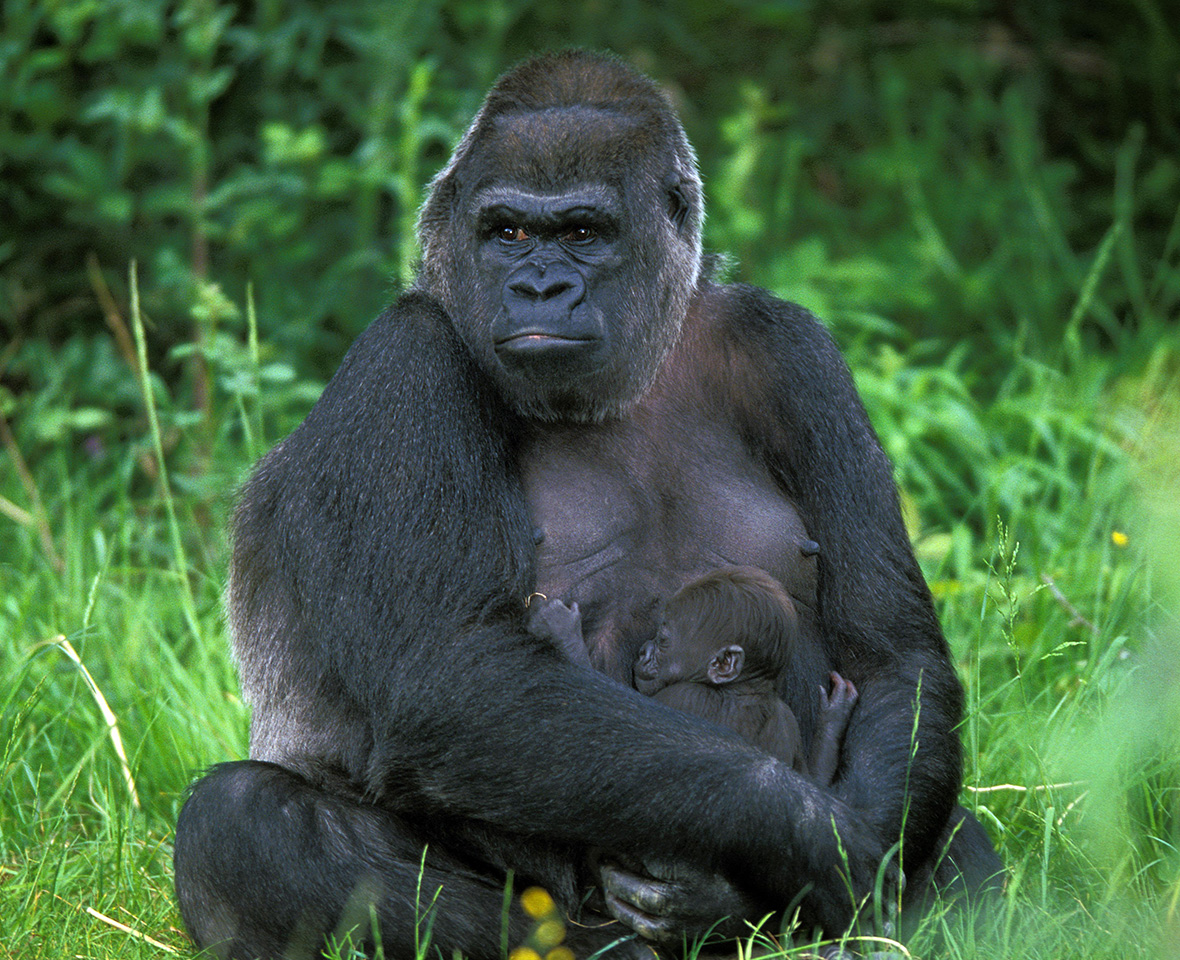
Gorillas are the largest of the great apes (there are 5 species of great ape, including, gorilla, orangutan, chimpanzee, bonobo, and human).
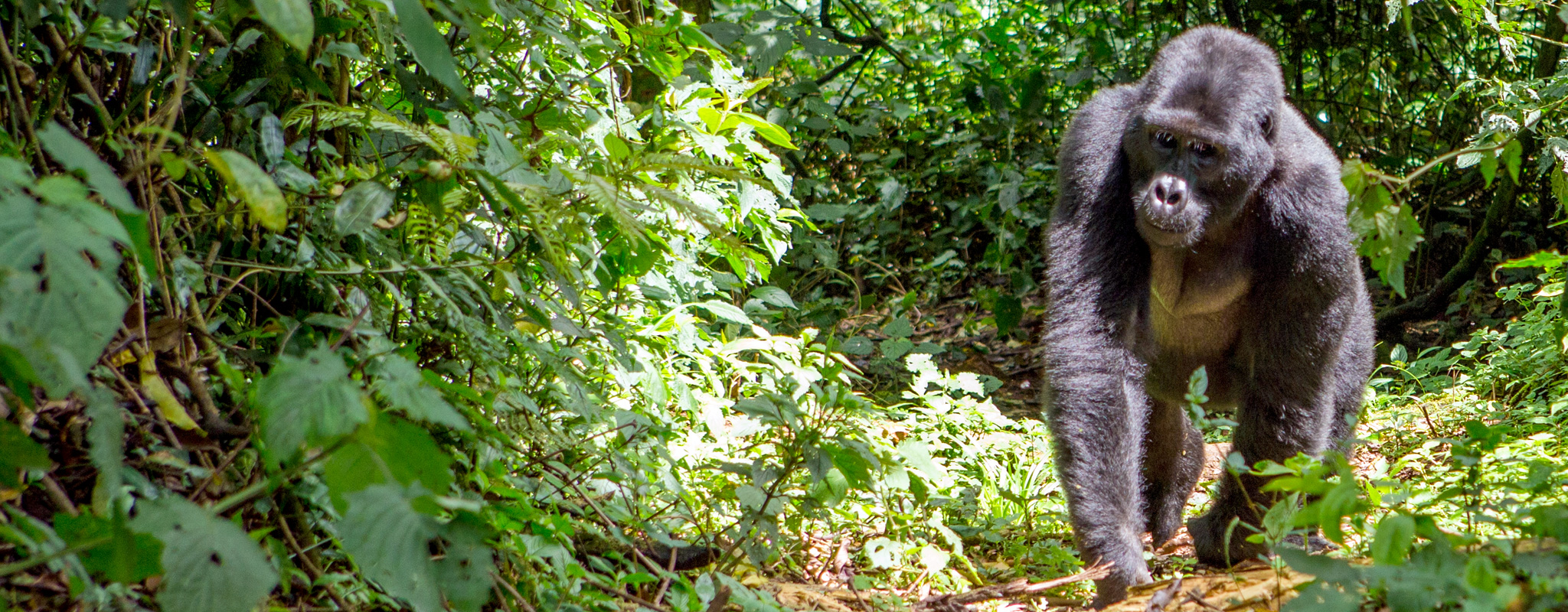
Gorillas are large powerful animal with a strong prominent chests and shoulders. They have large, human-like hands, with muscular arms that are longer than their legs.
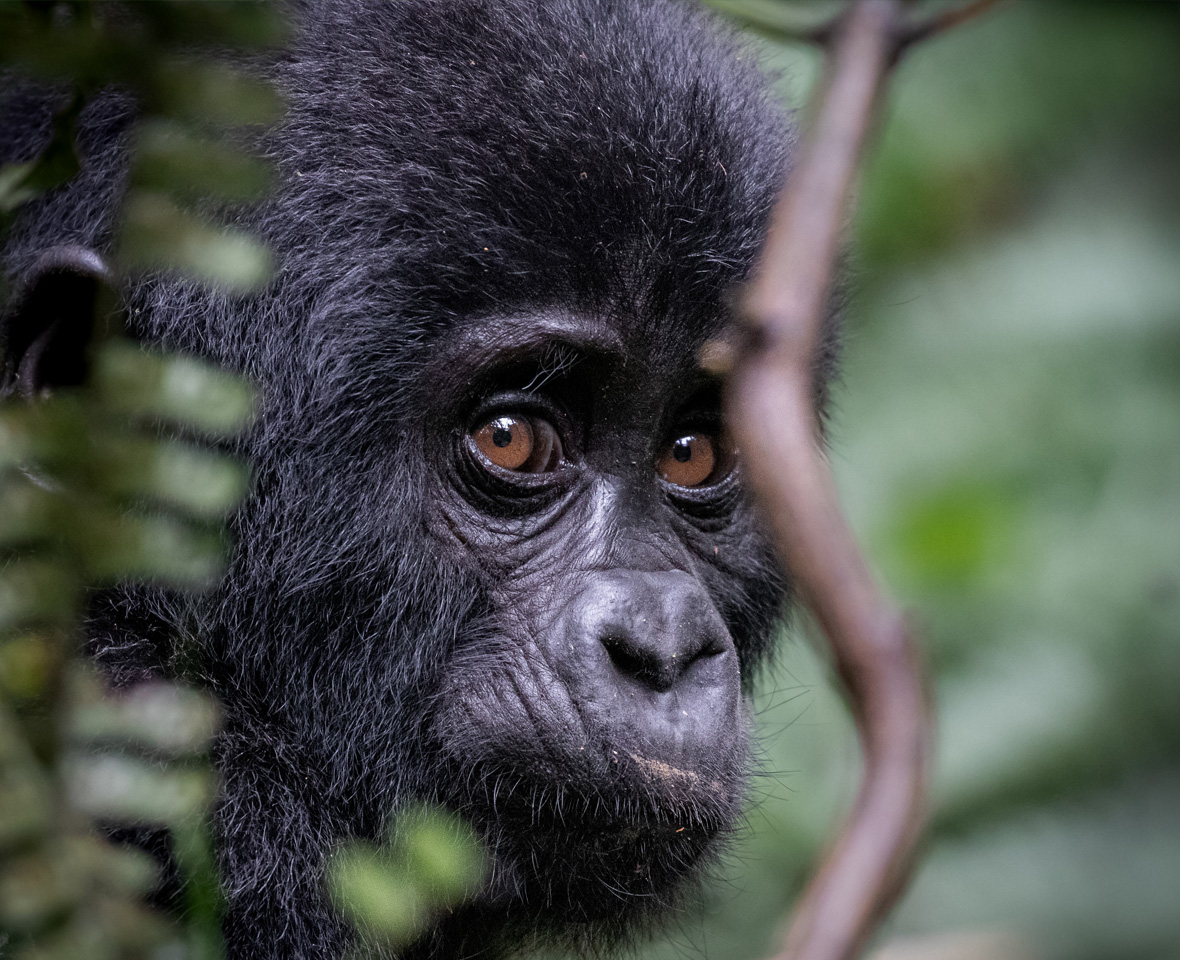
Gorillas have both black hair and skin, but lack any hair on their face, hands and feet, the chest of a male gorilla is also bare. and small eyes set into hairless faces. The gorillas face has small ears, small eyes, with large nostrils and a prominent brow ridge.

Adult male gorillas are identified by a sagittal crest along the midline of the skull (A sagittal crest is a ridge of bone running lengthwise along the midline of the top of the skull (at the sagittal suture). The presence of this ridge of bone indicates that there are exceptionally strong jaw muscles), and an area of white hair on the back, which is why they are known as ‘silverbacks.’

Male gorillas are about twice as heavy as females and reach a height of about 1.7 meters (5.5 feet) and weight of 135–220 kg (300–485 pounds). An adult female typically is about 1.5 meters tall and weighs about 70–90 kg.
Species of gorilla
There are two species of gorilla, both of which live in equatorial Africa (located on or near the Equator), separated by about 560 miles of Congo Basin forest.
Each species of gorilla has a lowland and upland subspecies. The two species, The Western Gorilla and Eastern Gorilla, and each species has two subspecies. You can find out more about each of the subspecies by clicking on the images below:
All four subspecies of gorilla are either listed Endangered or Critically Endangered, threatened by habitat loss, deforestation, poaching, bushmeat, and disease.

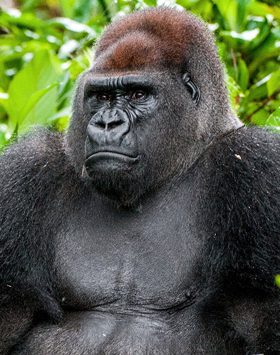
Western lowland gorilla
(Scientific name: Gorilla gorilla gorilla)
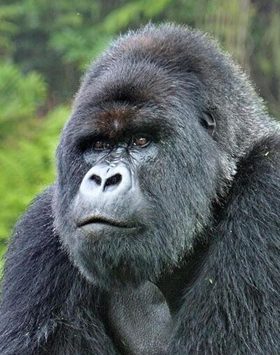
Cross river gorilla
(Scientific name: Gorilla gorilla diehli)
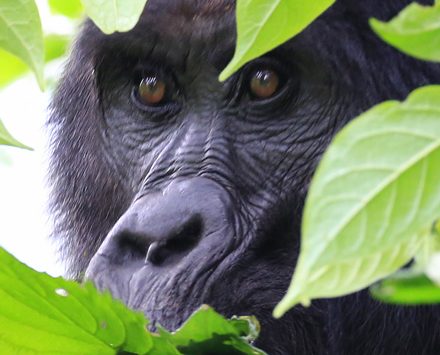
Mountain gorilla
(Scientific name: Gorilla beringei beringei)
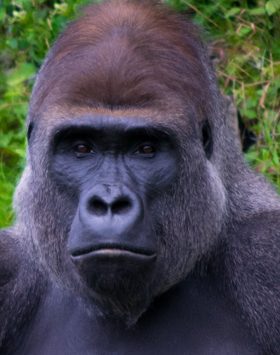
Eastern lowland or Grauer’s gorilla
(Scientific name: Gorilla beringei graueri)
Gorilla social structure
Gorillas have a well-developed and sophisticated social structure, living in family groups typically ranging from 5-10 individuals but can vary as much as 2-50 individuals.
The family is typically comprised of one or two males (silverbacks), females, infants and young adult males (blackbacks). The silverbacks lead the family and the dominant male(s) can retain their position of ‘head of the family’ for many years.
When an male reaches maturity and adult hood he will either leave the group and establish his own range near if old family, or if the adult remains with the group, that is an indication that the male is the offspring of the dominant male and that offspring will later take over leadership of the group.
Female gorillas leave their group at maturity to join other groups or single males.
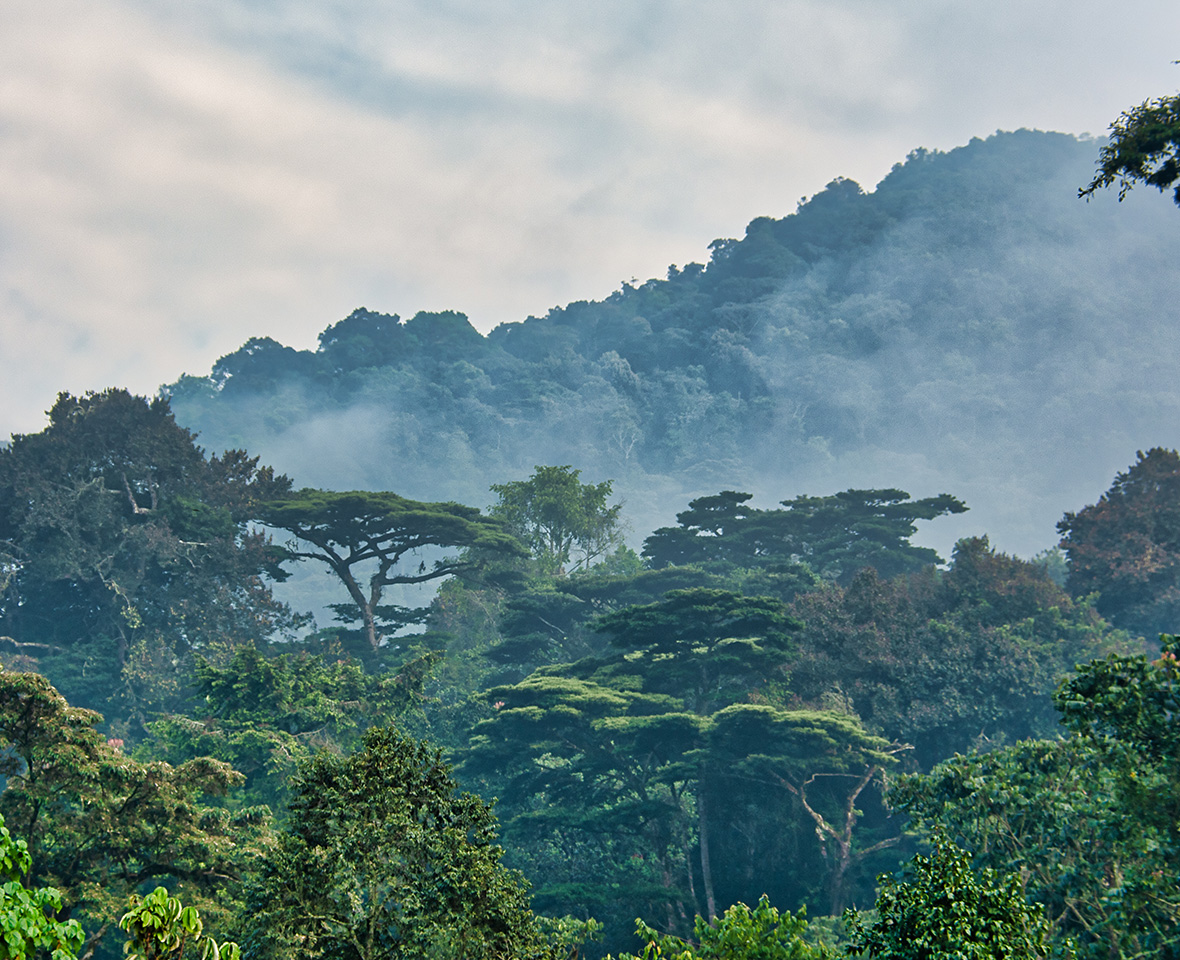
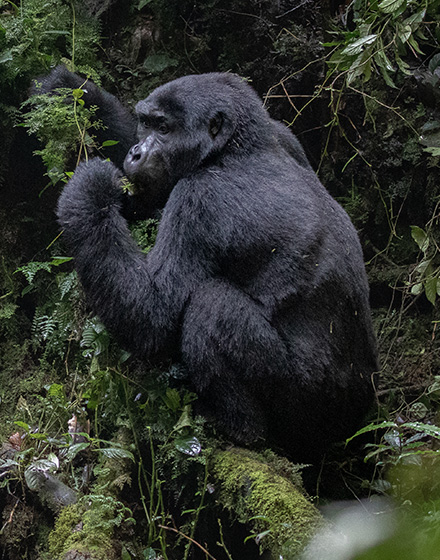
Female gorillas become sexually mature at 7-8 years old, but do not begin to breed until a few years later, whilst male gorillas do not reach sexual maturity until the age of 15 (on average).
Gorilla gestation period
Female gorillas give birth about once every four years. The gestation period is about eight and a half months (257 days), and they typically give birth to only one baby. The female will only have 3 to 4 babies in her entire lifetime. This low rate of reproduction makes it difficult for gorillas to recover from population declines.
Gorilla life expectancy
The average gorilla life expectancy in the wild is between 35-40 years. Female gorillas leave their group at maturity to join other groups or single males.
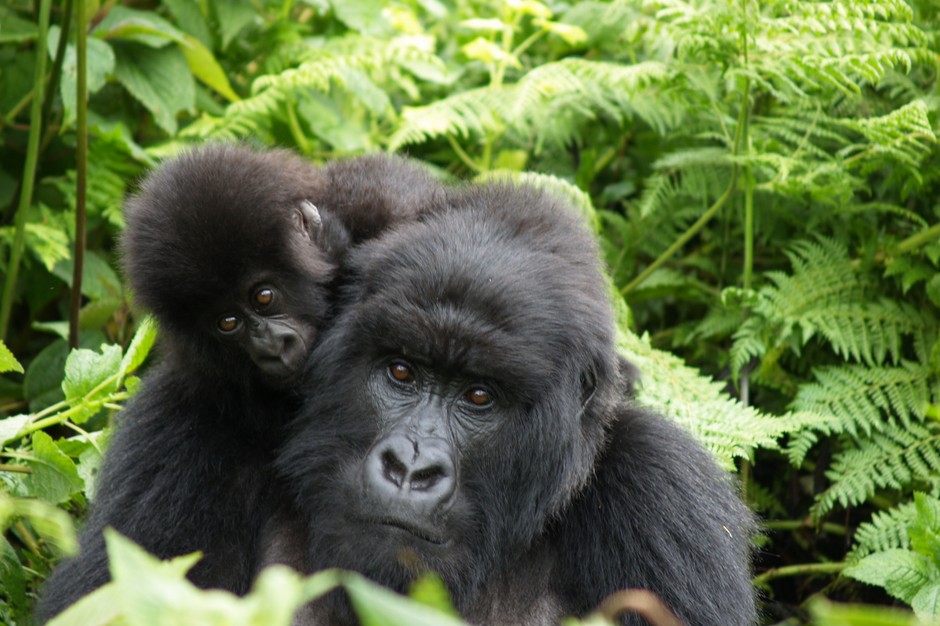

The gorilla is a quiet animal, and typically shy by nature.
To communicate wild gorillas use a variety of calls including grunts, hoots, a barks, and roars (which is given by aggressive males). The gorilla is a peaceful and unaggressive species unless it is unduly disturbed. Unwanted visitors are usually met head on by the groups silverback, who will display aggressive dominant behaviors to fend off the intruders and protect his group. This aggressive display usually involves chest beating, vocal roars, and short rushes toward the intruder.
Chest beating is performed by both males and females. Chest beating is often part of a ritual that may also include running sideways, tearing at vegetation, and slapping the ground. In addition to intimidating intruders, these displays also act as communication between groups and are often used to maintain the dominance hierarchy within the group.
Gorilla diet
What do gorillas eat? Gorillas are mainly vegetarian, feeding on fruits, stems, and bamboo shoots, complemented with bark and invertebrates. Some western lowland gorillas have been known to break open termite nests and feed on the larvae.
